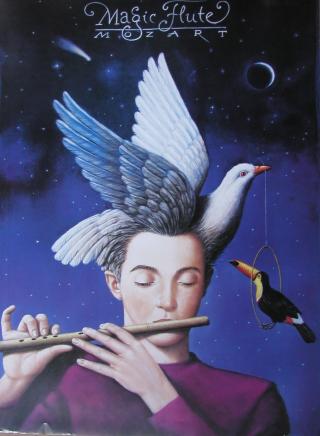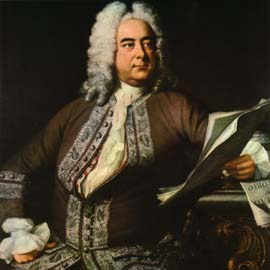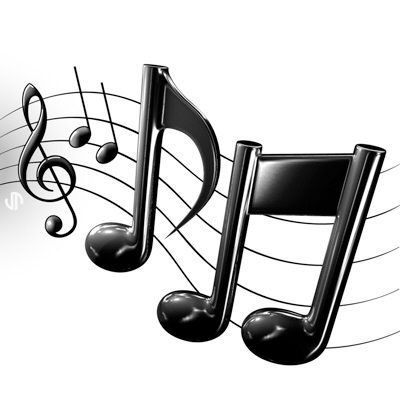![]()
![]()
OPERAS
This a summary of some of the operas and musicals of which Michelle has been a part. The purpose of this page is to provide information on some operas and the different styles of music that Michelle has worked on and in which she is the most interested. This page would be updated monthly so as to focus each time on one opera, musical work and style. On this month, you can take a look inside The Magic Flute by Mozart, performed by Michelle this coming August! Also, take a look at the Messiah by Handel in which Michelle has been an actively chorist for several years. On the styles, we will take you to the wonderful Baroque period.
Visit the feedback page to leave her comments and receive this newsletter everytime is updated, along with dates for upcoming shows!
THE MAGIC FLUTE (Die Zauberflöte)
 The Magic Flute is an opera in two acts composed in 1791 by Wolfgang Amadeus Mozart to a libretto by Emanuel Schikaneder. The work is in the form of a Singspiel, a popular form that included both singing and spoken dialogue.
The Magic Flute is an opera in two acts composed in 1791 by Wolfgang Amadeus Mozart to a libretto by Emanuel Schikaneder. The work is in the form of a Singspiel, a popular form that included both singing and spoken dialogue.
The opera was the culmination of a period of increasing involvement by Mozart with Schikaneder's theatrical troupe, which since 1789 had been the resident company at the Theater auf der Wieden. Mozart was a close friend of one of the singer-composers of the troupe, tenor Benedikt Schack (the first Tamino), and had contributed to the compositions of the troupe, which were often collaboratively written. Mozart's participation increased with his contributions to the 1790 collaborative opera Der Stein der Weisen ("The Philosopher's Stone"), including the duet ("Nun liebes Weibchen") and perhaps other passages. Like The Magic Flute, Der Stein der Weisen was a fairy-tale opera and can be considered a kind of precursor; it employed much the same cast in similar roles. The Magic Flute is noted for its prominent Masonic elements; Schikaneder and Mozart were Masons and lodge brothers (see: Mozart and Freemasonry). The opera is also influenced by Enlightenment philosophy, and can be regarded as an allegory advocating enlightened absolutism. The Queen of the Night represents a dangerous form of obscurantism, whereas her antagonist Sarastro symbolises the reasonable sovereign who rules with paternalistic wisdom and enlightened insight. Mozart evidently wrote keeping in mind the skills of the singers intended for the premiere, which included both virtuosi and ordinary comic actors, asked to sing for the occasion. Thus, the vocal lines for Papageno and Monostatos are often stated first in the strings so the singer can find his pitch, and are frequently doubled by instruments. In contrast, Mozart's sister-in-law Josepha Hofer, who premiered the role of the Queen of the Night, evidently needed little such help: this role is famous for its difficulty. In ensembles, Mozart skillfully combined voices of different ability levels. A particularly demanding aria is the Queen of the Night's "Der Hölle Rache kocht in meinem Herzen" ("The vengeance of Hell boils in my heart"), which reaches a high F6 (see Scientific pitch notation), rare in opera. At the low end, the part of Sarastro includes a conspicuous F in a few locations. While the female roles in the opera are assigned to different voice types, the playbill for the premiere performance referred to all of the female singers as "sopranos". The casting of the roles relies on the actual pitch range of the part.
More Information: Wikipedia
 Messiah is an oratorio by George Frideric Handel based on a libretto by Charles Jennens. Composed in the summer of 1741 and premiered in Dublin on 13 April 1742, Messiah is Handel's most famous creation and is among the most popular works in Western choral literature. It includes the very well-known "Hallelujah Chorus".
Messiah is an oratorio by George Frideric Handel based on a libretto by Charles Jennens. Composed in the summer of 1741 and premiered in Dublin on 13 April 1742, Messiah is Handel's most famous creation and is among the most popular works in Western choral literature. It includes the very well-known "Hallelujah Chorus".
The work is a presentation of Jesus's life and its significance according to Christian doctrine. The name of the oratorio is taken from Judaism and Christianity's concept of the Messiah ("the anointed one"). In Christianity, Jesus is the Messiah.
More Information: Handel's Messiah
 Baroque music describes a period or style of European classical music approximately extending from 1600 to 1750. This era is said to begin in music after the Renaissance and was followed by the Classical music era. The word "baroque" came from the Portuguese word barroco, meaning "misshapen pearl", a strikingly fitting characterization of the architecture of this period; later, the name came to be applied also to its music. Baroque music forms a major portion of the classical music canon, being widely studied, performed, and listened to. It is associated with composers such as Johann Sebastian Bach, Antonio Vivaldi, George Frideric Handel, Arcangelo Corelli, Claudio Monteverdi, and Tomaso Albinoni. The baroque period saw the development of functional tonality. During the period, composers and performers used more elaborate musical ornamentation; made changes in musical notation, and developed new instrumental playing techniques. Baroque music expanded the size, range, and complexity of instrumental performance, and also established opera as a musical genre. Many musical terms and concepts from this era are still in use today.
Baroque music describes a period or style of European classical music approximately extending from 1600 to 1750. This era is said to begin in music after the Renaissance and was followed by the Classical music era. The word "baroque" came from the Portuguese word barroco, meaning "misshapen pearl", a strikingly fitting characterization of the architecture of this period; later, the name came to be applied also to its music. Baroque music forms a major portion of the classical music canon, being widely studied, performed, and listened to. It is associated with composers such as Johann Sebastian Bach, Antonio Vivaldi, George Frideric Handel, Arcangelo Corelli, Claudio Monteverdi, and Tomaso Albinoni. The baroque period saw the development of functional tonality. During the period, composers and performers used more elaborate musical ornamentation; made changes in musical notation, and developed new instrumental playing techniques. Baroque music expanded the size, range, and complexity of instrumental performance, and also established opera as a musical genre. Many musical terms and concepts from this era are still in use today.
More Information: Baroque Music
 Quote of the week:
Quote of the week:
"Stop closing your eyes to sleep, close them to dream" Michi
| |
| |
| |
| |